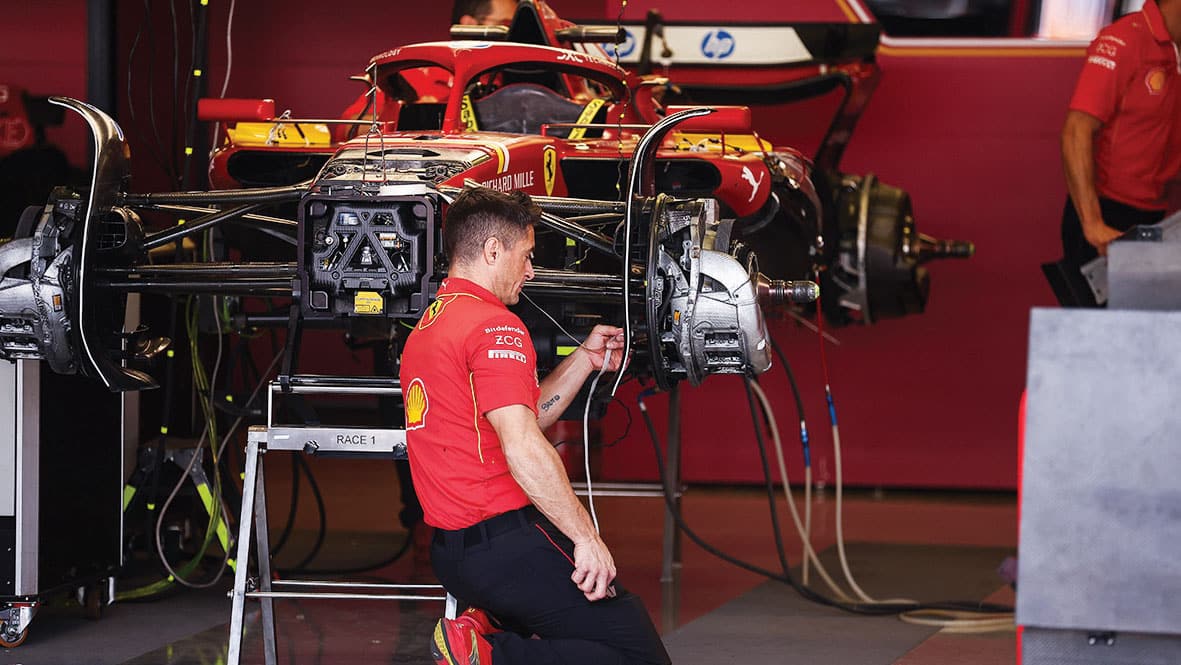Ferrari cooling problems vanish into thin air in Mexico
At the 2024 Mexico City Grand Prix, Ferrari scaled the heights by managing its brake temperature to give its drivers the edge at altitude

DPPI
Although the Mexico City GP was an unambiguous one-stop race, the strategy challenge was based around the cooling levels chosen for the car in Mexico’s thin air. At an altitude of one a half miles above sea level, the air is 25% less effective as a cooling medium so brakes need enhanced cooling arrangements.
Enlarging the inlet duct of the brakes costs aerodynamic performance and to an extent it can be advantageous to slightly under-cool so as to give an advantage in qualifying and then have the driver manage the temperatures in the race by an appropriate amount of lift-and-coast. This had the advantage of giving the tyres an easier time. It’s a choice which might be especially attractive to a team if it believes it has the pace to run at the front in undisturbed air.
Ferrari made this choice. Although it ran with a greater number of cooling holes in the discs, the duct inlet was only marginally bigger than in Austin. Ferrari estimated its car would be super-competitive at Mexico City’s track. Carlos Sainz duly delivered pole and was leading after four laps. The reason he was so keen to make an early pass on Max Verstappen was so as not to be forced into lift-and-coast mode. Charles Leclerc, running behind Sainz, closed up fast. He was within 1.1sec after 14 laps; Sainz complained that they had no need to be forcing the pace when running 1-2. The issue decided itself – courtesy of Leclerc’s brake temperatures. Running hard in dirty air had overheated them and for the rest of the stint he was into lift-and-coast mode; Sainz surged ahead.
Once Lando Norris was released by Verstappen pitting out of his way, the McLaren closed the gap to Leclerc. It had not been so adventurous with brake duct inlet sizes and this, in combination with the sophisticated duct design, gave Norris no concerns about running hard in his chase of the Ferraris. “I hoped I could defend long enough to make him overheat,” said Leclerc, “but I couldn’t.”

